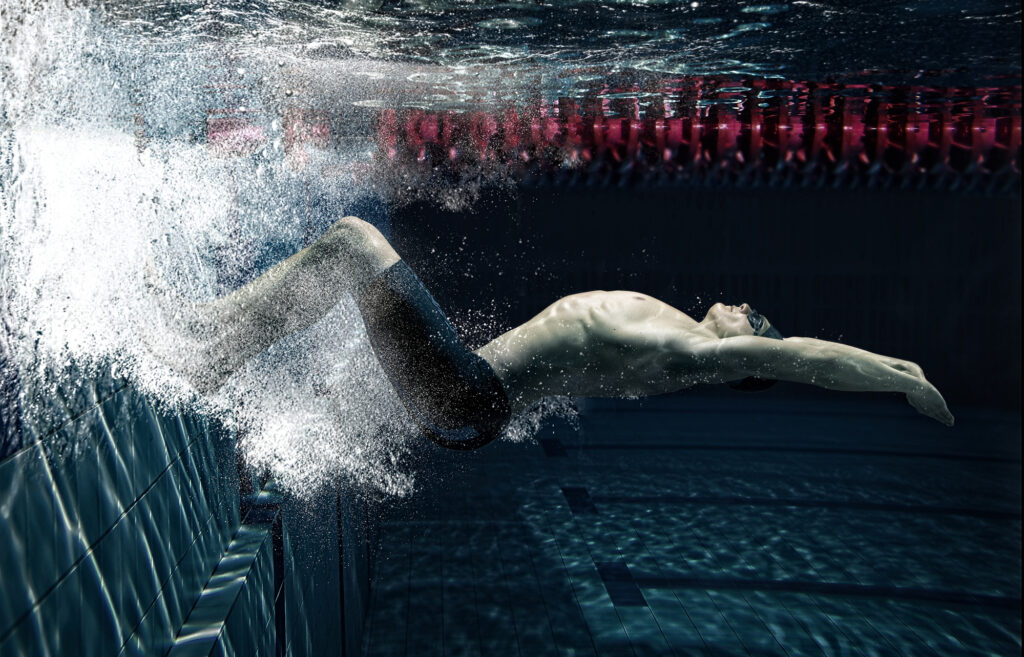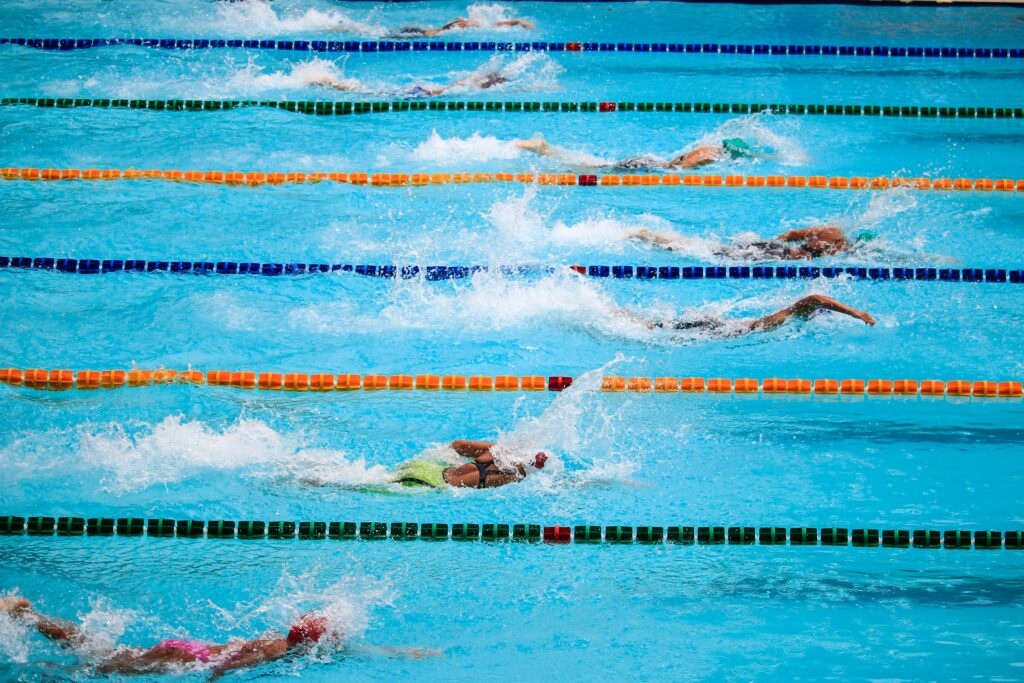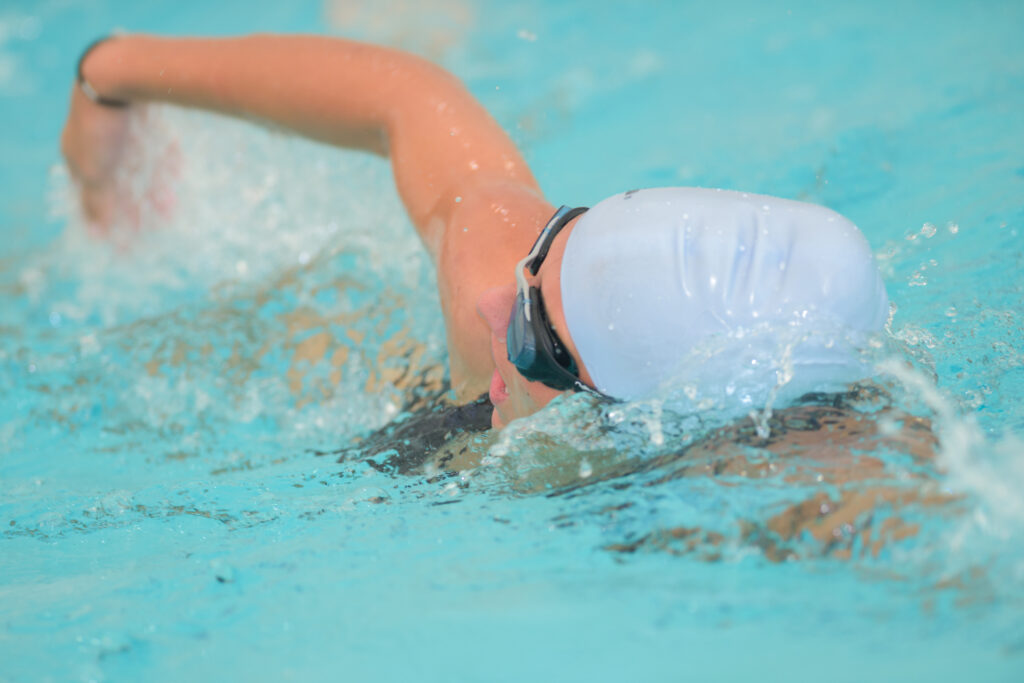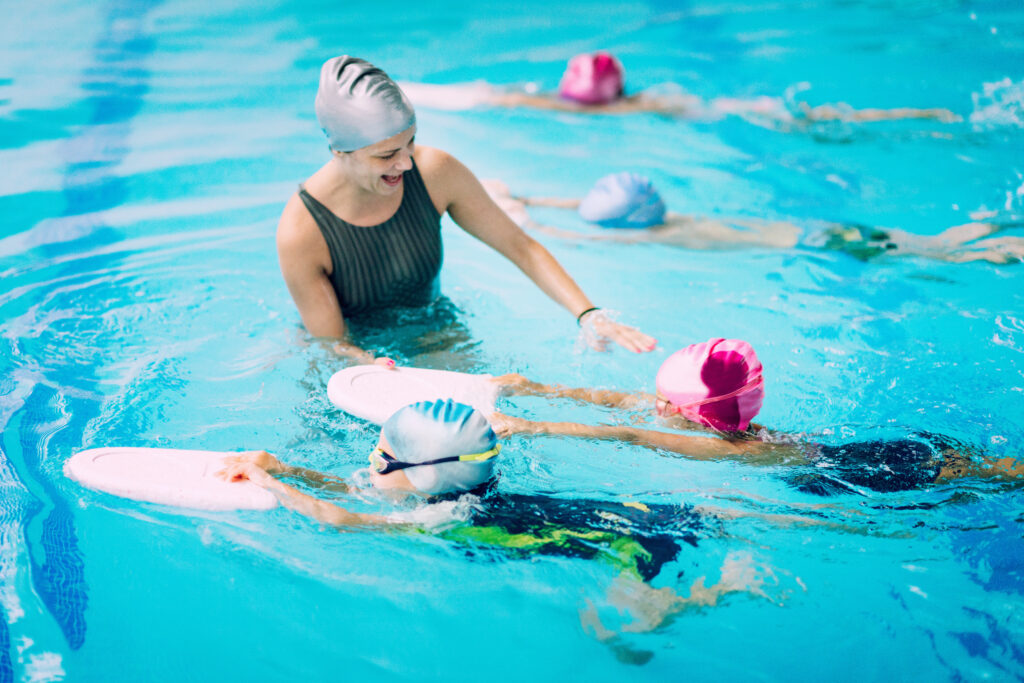Swimming is an excellent form of exercise that provides a full-body workout, improves cardiovascular health, and helps to build endurance. One of the most important techniques in swimming is the tumble turn, also known as the flip turn. A tumble turn is a technique used by swimmers to quickly change direction and continue swimming without losing momentum.
Learning how to execute a tumble turn can be challenging, but with practice, it can become a valuable skill for swimmers of all levels. In this beginner’s guide to tumble turn in swimming, you will learn the basics of the technique, including how to approach the wall, how to execute the turn, and how to push off the wall to continue swimming.
Whether you are a beginner or an experienced swimmer, mastering the tumble turn can help you to swim faster, more efficiently, and with greater confidence. By following the steps outlined in this guide and practicing regularly, you can improve your swimming technique and take your swimming to the next level.
Understanding the Tumble Turn
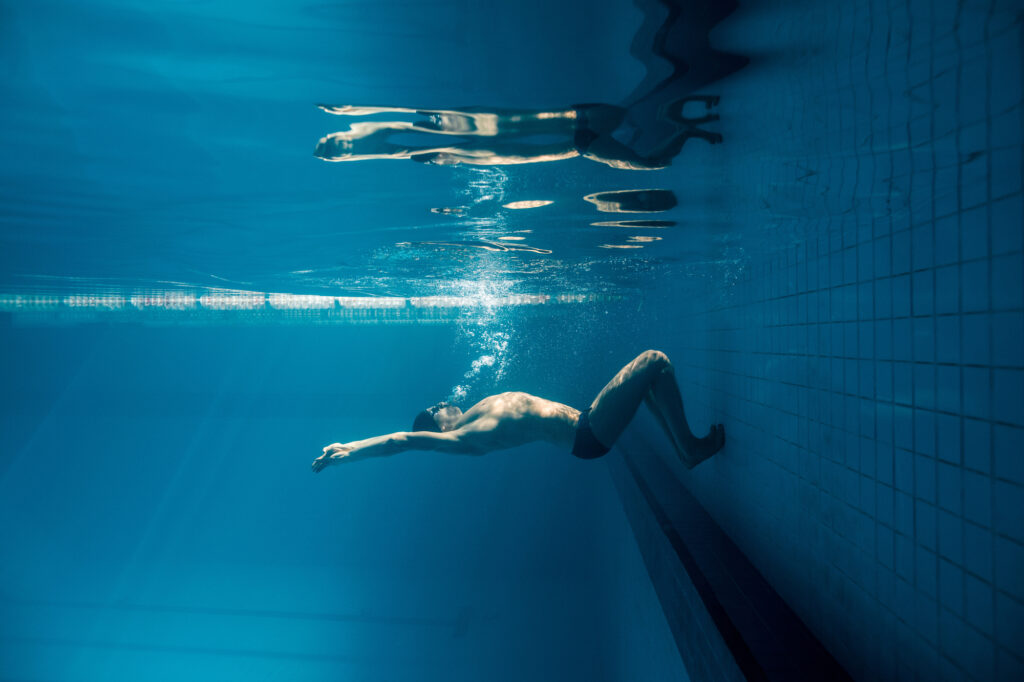
The Basics of Tumble Turn
A tumble turn is a technique used in swimming that allows swimmers to change direction quickly and efficiently. It involves doing a somersault while touching the wall with both hands and then pushing off the wall in the opposite direction. This technique is commonly used in competitive swimming to gain an advantage over other swimmers.
To perform a tumble turn, swimmers must approach the wall with enough speed and distance to allow them to complete the turn. As they get close to the wall, they must take one final stroke and then tuck their chin to their chest and somersault forward while keeping their legs together.
After completing the somersault, swimmers must touch the wall with both hands and then push off the wall with their feet in the opposite direction. This technique allows swimmers to maintain their momentum and swim faster.
Importance in Competitive Swimming
The tumble turn is an essential technique for competitive swimmers. It allows them to make quick turns and maintain their speed, giving them an advantage over other swimmers. In fact, the tumble turn can make a significant difference in a swimmer’s overall performance.
Competitive swimmers must master the tumble turn to be successful in their sport. It requires practice and dedication to perfect this technique. Once mastered, the tumble turn can help swimmers become faster and more efficient in the water.
In conclusion, the tumble turn is a crucial technique for swimmers, especially those in competitive swimming. It allows them to change direction quickly and maintain their speed, giving them an advantage over other swimmers. Swimmers must practice and perfect this technique to become successful in their sport.
Preparation for the Tumble Turn
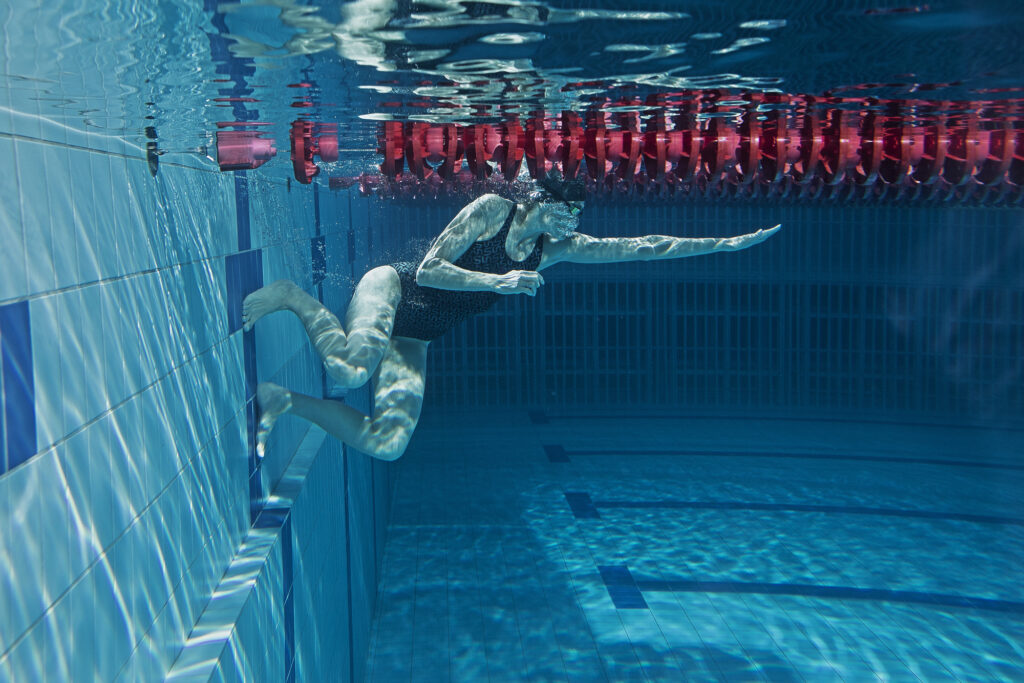
Before attempting a tumble turn, it is important for beginners to understand the proper positioning, approach, and breath control necessary for executing a successful turn.

Positioning Before the Turn
As the swimmer approaches the wall, they should be in a streamlined position with their chin tucked in towards their chest. This position helps to reduce drag and maintain speed as the swimmer approaches the wall.
Approaching the Wall
To execute a successful tumble turn, the swimmer should approach the wall at a consistent speed. It is important to maintain the same pace that has been used throughout the length of the pool. The swimmer should also keep their head down and their eyes focused on the wall.
Breath Control
Breath control is crucial when executing a tumble turn. The swimmer should take a deep breath before approaching the wall and hold their breath as they execute the turn. This will help to maintain body position and reduce drag.
As the swimmer approaches the wall, they should use their arms to initiate the turn. The swimmer should bring both arms down and next to the hips on the last stroke before turning. The body should remain straight and the feet should be positioned to touch the wall.
Learning to execute a successful tumble turn takes practice. Swimmers should start by practicing the positioning, approach, and breath control before attempting the full turn. Flags can be used to mark the approach to the wall and help swimmers maintain a consistent pace. With practice, swimmers can master the tumble turn and improve their swimming technique.
Executing the Tumble Turn
Executing a tumble turn can be a daunting task for beginners. However, with practice and proper technique, anyone can master it. In this section, we will break down the process into three subsections: “Initiating the Somersault,” “Rotation and Tucking,” and “Foot Placement on the Wall.”
Initiating the Somersault
To initiate the tumble turn, the swimmer should approach the wall with speed and momentum. As they approach the wall, they should take a final stroke and bring both arms down and next to the hips. The swimmer should then tuck their chin to their chest and begin to somersault.
Rotation and Tucking
As the swimmer somersaults, they should keep their body straight and tuck their knees towards their chest. This will help to generate momentum and allow the swimmer to rotate their body. The swimmer should continue to rotate until their feet are facing the wall.
Foot Placement on the Wall
Once the swimmer’s feet are facing the wall, they should extend their legs and place their feet on the wall. The swimmer should use the wall to push off and gain momentum for the next lap. As the swimmer pushes off the wall, they should keep their head down and streamline their body.
In summary, executing a tumble turn requires proper technique and practice. By following the steps outlined above, swimmers can improve their speed and efficiency in the pool.
The Push-Off and Streamline
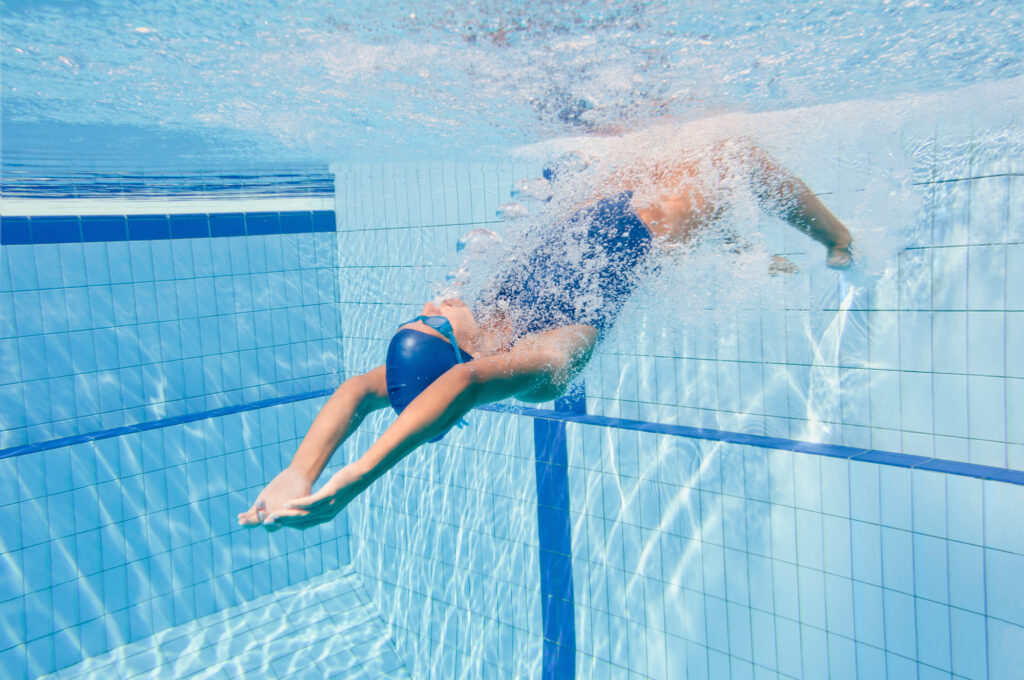
When it comes to executing a successful tumble turn, the push-off and streamline are crucial components. In this section, we will discuss the proper technique for launching from the wall and achieving the ideal streamline position.
Launching from the Wall
The push-off is the first step in executing a tumble turn. To achieve maximum speed and efficiency, the swimmer should push off the wall with as much force as possible. This is achieved by using the legs, arms, and chest to generate momentum.
As the swimmer approaches the wall, they should take a few quick strokes to build up speed. Just before reaching the wall, the swimmer should tuck their head down and bring their feet towards their buttocks. This will allow them to get into a tight ball and push off the wall with maximum force.
Streamline Position and Technique
After launching from the wall, the swimmer should immediately assume the streamline position. This involves extending the arms straight above the head and pressing them together. The head should be tucked down between the arms, and the legs should be tightly pressed together.
Maintaining the streamline position is crucial for achieving maximum speed and efficiency. The swimmer should aim to stay in this position for as long as possible, using their body, feet, arms, head, and legs to maintain a streamlined shape.
To further enhance their swimming performance, the swimmer can incorporate a dolphin kick into their streamline position. This involves using a powerful undulating motion of the legs to propel the body forward. By mastering the dolphin kick, swimmers can achieve even greater speed and efficiency in the water.
In summary, the push-off and streamline are essential components of a successful tumble turn. By mastering these techniques, swimmers can achieve maximum speed and efficiency in the water, ultimately improving their overall swimming performance.
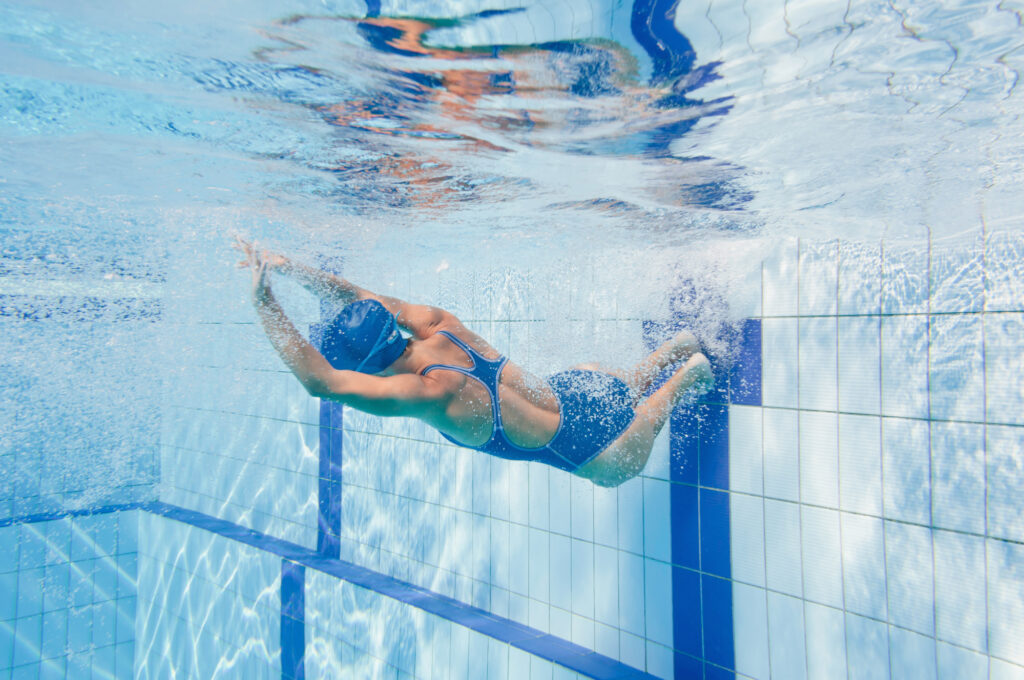
Transitioning Back to Stroke
After completing the tumble turn, the swimmer needs to transition back to the stroke as quickly as possible to maintain their momentum. This section will cover the two main aspects of transitioning back to the stroke: resuming the stroke and freestyle kick integration.
Resuming the Stroke
Once the swimmer has completed the tumble turn and pushed off the wall, they need to resume their stroke as quickly as possible. The swimmer should aim to have their arms fully extended and their head down in the water before they start their first stroke. This will help to maintain their momentum and ensure they continue to move through the water efficiently.
Freestyle Kick Integration
In freestyle races, the freestyle kick is an essential part of the stroke. After completing the tumble turn, the swimmer should aim to integrate the freestyle kick back into their stroke as quickly as possible. The freestyle kick should be initiated as soon as the swimmer’s head is down in the water and their arms are fully extended. The kick should be strong and powerful, with the swimmer aiming to generate as much propulsion as possible.
Overall, transitioning back to the stroke after a tumble turn requires the swimmer to be efficient and quick. By resuming the stroke and integrating the freestyle kick back into their stroke as quickly as possible, the swimmer can maintain their momentum and continue to move efficiently through the water.
Drills and Practice Techniques
Drills to Improve Tumble Turns
To improve the tumble turn technique, swimmers can practice a variety of drills that focus on different aspects of the turn. One such drill is the “tuck and roll” drill, where swimmers practice tucking their chin to their chest and rolling forward into a somersault. This helps them get a feel for the motion of the turn and the importance of keeping their head down.
Another drill that can be helpful is the “push-off and glide” drill. In this drill, swimmers push off the wall and glide underwater for as long as possible before surfacing. This helps them work on their streamline position and timing, which are crucial for a successful turn.
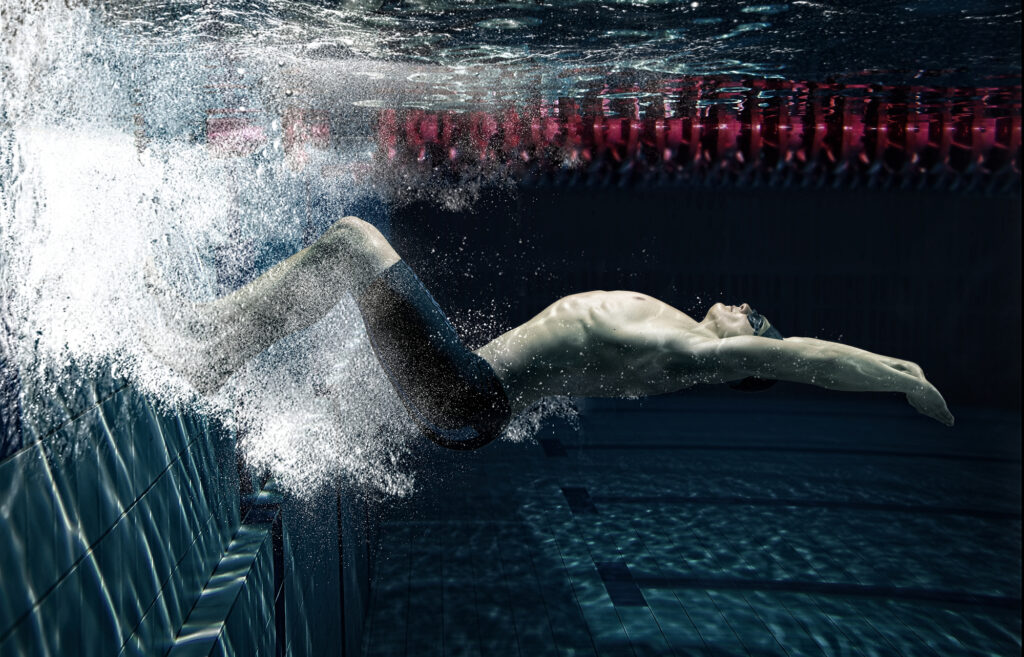
Step-by-Step Practice Routines
Swimmers can also benefit from practicing step-by-step routines to perfect their tumble turn technique. A common routine involves the following stages:
- Approach: Swimmers should approach the wall with a strong freestyle stroke and keep their head down.
- Flip: As they reach the wall, swimmers should tuck their chin to their chest and perform a somersault, pushing off the wall with their feet.
- Glide: After pushing off the wall, swimmers should glide underwater in a streamlined position for as long as possible before surfacing.
- Kick: Once they surface, swimmers should begin their freestyle kick and continue swimming.
Coaches and teachers can help swimmers perfect their technique by providing feedback and guidance throughout the practice routine. By breaking down the turn into these step-by-step stages, swimmers can focus on each aspect of the turn and gradually improve their overall technique.
Overall, practicing a variety of drills and step-by-step routines can help swimmers improve their tumble turn technique and become more efficient in the water. With the guidance of coaches and teachers, swimmers can perfect their technique and become more confident in their swimming abilities.
Common Mistakes and Corrections
Troubleshooting Tumble Turns
Tumble turns are a tricky manoeuvre to master, and even experienced swimmers can struggle with them. Here are some common mistakes and corrections to help you troubleshoot your tumble turns:
- Mistake: Failing to flip over completely during the turn. This can happen if the swimmer doesn’t tuck their chin to their chest and initiate the flip with their legs.
- Correction: Practice flipping over in the water without touching the wall. Start by pushing off the wall and flipping over halfway, then gradually work up to a full flip. Focus on tucking your chin and using your legs to initiate the flip.
- Mistake: Losing momentum during the turn. This can happen if the swimmer doesn’t maintain a tight tuck or doesn’t push off the wall with enough force.
- Correction: Practice maintaining a tight tuck throughout the turn. Keep your knees close to your chest and your arms close to your body. Also, focus on pushing off the wall with as much force as possible. Imagine you’re trying to push the wall away from you.
- Mistake: Coming up too early after the turn. This can happen if the swimmer doesn’t wait until they’re fully streamlined before starting their first stroke.
- Correction: Practice staying streamlined for as long as possible after the turn. Count to three before starting your first stroke. This will help you maintain your momentum and get back up to speed more quickly.
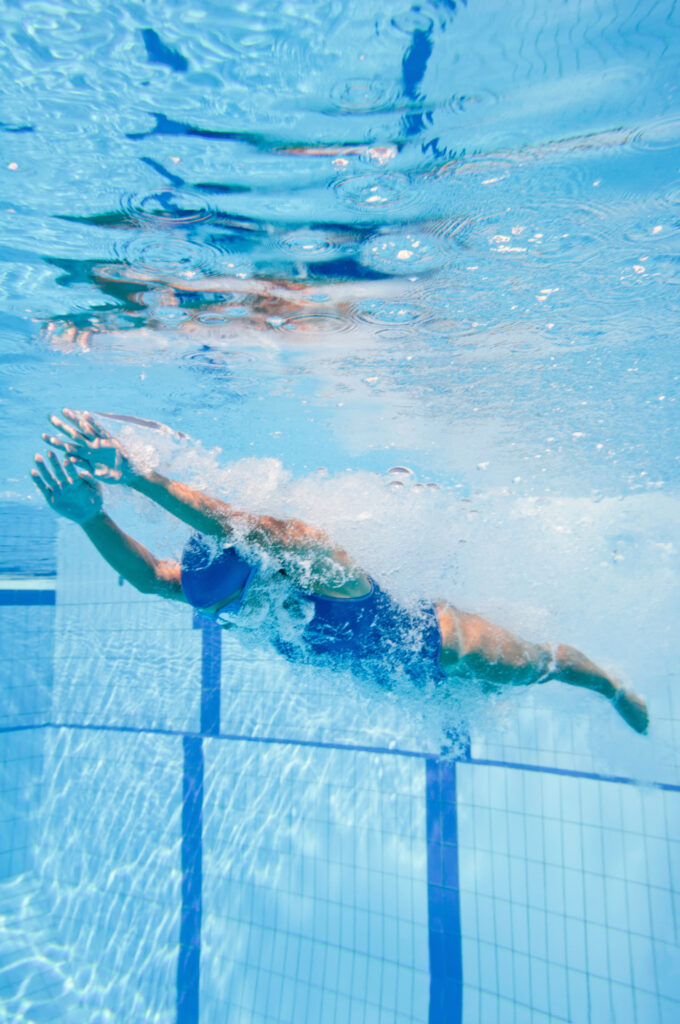
Tips from Coaches
Learning to tumble turn takes practice and patience, but there are some tips from coaches that can help you master the technique more quickly:
- Tip: Focus on your technique, not your speed. It’s better to do a slow, controlled tumble turn than a fast, sloppy one.
- Tip: Practice your flip outside of the pool. You can practice flipping over on a mat or a soft surface to get the hang of the movement.
- Tip: Use your abs to tuck your knees to your chest during the flip. This will help you maintain a tight tuck and flip over more quickly.
- Tip: Visualize the turn before you do it. Imagine yourself executing the perfect tumble turn, and then try to replicate that image in the pool.
By focusing on your technique, practicing regularly, and following these tips, you can master the tumble turn and improve your swimming speed and efficiency.
Advanced Tumble Turn Techniques
Incorporating Speed and Agility
Once a swimmer has mastered the basics of the tumble turn, they can work on incorporating speed and agility into their technique. This involves using the momentum of the turn to push off the wall with greater force, allowing the swimmer to maintain their speed and momentum through the turn.
To achieve this, swimmers can practice their approach to the wall, ensuring they maintain a strong and consistent stroke pace as they approach the wall. They should also focus on maintaining a tight tuck as they flip and push off the wall, using their core muscles to generate power.
Refining the Tumble Turn for Competitions
For competitive swimmers, the tumble turn is a crucial technique that can make all the difference in a race. To refine their technique for competitions, swimmers can work on perfecting their timing and precision, ensuring they hit the wall at the right angle and with the correct amount of force.
Competitors can also work on their twist as they approach the wall, using their upper body to generate additional speed and momentum. This can help them to maintain their pace and gain an edge over their opponents.
Overall, mastering the advanced tumble turn techniques requires practice, patience and dedication. By incorporating these techniques into their training, swimmers can improve their swimming performance and achieve greater success in competitive swimming.
Frequently Asked Questions
What are the essential steps for performing a tumble turn in swimming?
Performing a tumble turn requires a combination of skills, including proper body positioning, timing, and technique. The essential steps for performing a tumble turn include:
- Swim towards the wall and ensure that you breathe on the last stroke before turning.
- On the last stroke, bring both arms down and next to the hips.
- Keep the body straight and hold feet together.
- Tuck the chin to the chest and initiate the somersault.
- Use the momentum of the somersault to push off the wall and streamline underwater.
- Begin the first stroke as soon as possible.
How can a beginner effectively practice tumble turns?
Beginners can effectively practice tumble turns by breaking down the skill into smaller parts and practicing each part separately. For example, swimmers can practice somersaults in the water to get comfortable with the movement. They can also practice pushing off the wall in a streamlined position to improve their underwater speed. Additionally, using a pool noodle or lane rope can be an effective teaching tool for helping swimmers to understand the tumble turn.
What are the common mistakes to avoid when learning tumble turns?
Common mistakes to avoid when learning tumble turns include:
- Not breathing out completely before initiating the turn.
- Not keeping the body straight during the somersault.
- Not pushing off the wall with enough force.
- Not maintaining a streamlined position underwater.
- Starting the first stroke too late.
Why is mastering the tumble turn important for competitive swimming?
Mastering the tumble turn is important for competitive swimming because it allows swimmers to maintain their speed and momentum during a race. A well-executed tumble turn can help a swimmer shave off valuable seconds from their lap time. Additionally, mastering the tumble turn can help reduce the amount of energy required to complete a race, allowing swimmers to conserve their energy for the rest of the race.
In what ways do flip turns and tumble turns differ?
Flip turns and tumble turns are similar in that they both involve somersaulting and pushing off the wall. However, flip turns are typically used in freestyle, butterfly, and backstroke, while tumble turns are used in breaststroke. Additionally, flip turns involve touching the wall with both hands, while tumble turns do not.
What techniques can swimmers use to improve their speed and efficiency in turns?
Swimmers can improve their speed and efficiency in turns by:
- Practicing proper technique for the turn.
- Improving their underwater streamline position.
- Focusing on maintaining their speed and momentum during the turn.
- Incorporating strength and flexibility training to improve their somersaulting ability.
- Analyzing their technique and making adjustments as needed.

